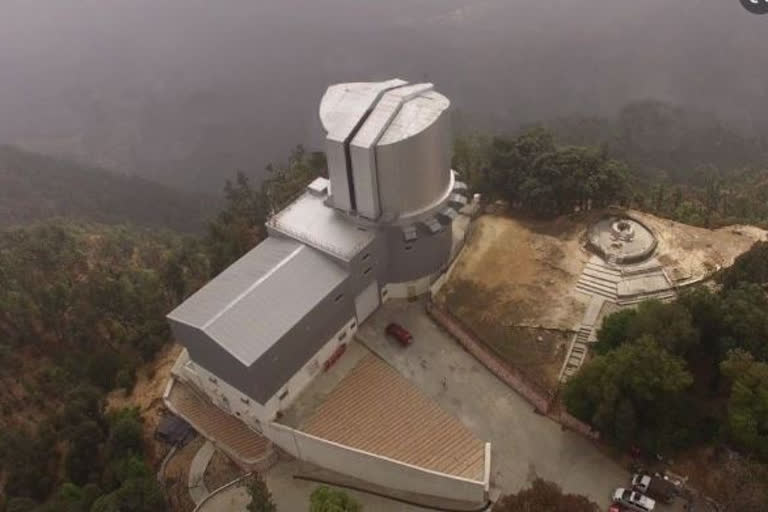Nanital: Aryabhatta Research Institute of Observational Sciences (ARIES) has placed the International Liquid Mirror Telescope (ILMT), India's first liquid mirror telescope at Devasthal Observatory situated on a hilltop in the Nanital district of Uttrakhand. This liquid-mirror telescope will observe transient and variable objects such as asteroids, supernovae, space debris, and all other celestial objects from an altitude of 2,450 meters in the Himalayas. It has now entered the commissioning phase and will start scientific observations sometime in October this year.
The telescope was designed and built at the Advanced Mechanical and Optical Systems Corporation and the Centre Spatial de Liege, Belgium. The major instrumentation funding was jointly provided by Canada and Belgium while India will be responsible for the operations and upkeep of the telescope.
The Director of ARIES, Professor Dipankar Banerjee said that the ILMT project will attract and motivate young minds to take up challenging problems. "ILMT is the first liquid-mirror telescope designed exclusively for astronomical observations installed at the Devasthal Observatory of ARIES...I am hopeful that this project will attract and motivate several young minds from scientific and engineering backgrounds to take up challenging problems," he said in a statement.
He also stated that Devasthal Observatory now hosts two four-meter class telescopes – the ILMT and the Devasthal Optical Telescope (DOT). Notably, both these telescopes are the largest aperture telescopes available in the country.
Also Read: ISRO carries out static test of Gaganyaan rocket's booster
The ILMT will produce about 10 GB of data every night, which will be quickly analysed to reveal variable and transient stellar sources. “When the regular science operations begin, ILMT will produce about 10 GB of data/night, which will be quickly analyzed to reveal variable and transient stellar sources,” said Dr. Brajesh Kumar, ILMT Project Scientist and trained expert in handling liquid-mirror telescope operations.
The 3.6-meter DOT, with the availability of sophisticated back-end instruments, will allow rapid follow-up observations of the newly-detected transient sources with the adjacent ILMT.
In the year 2017, with the help of 8 countries including Belgium, Canada, Poland, and Uzbekistan, Aeries started the International Liquid Mirror Telescope project with the help of about 50 crores. But because of Corona, there was a delay in the operation of the telescope, which has been started last month.



